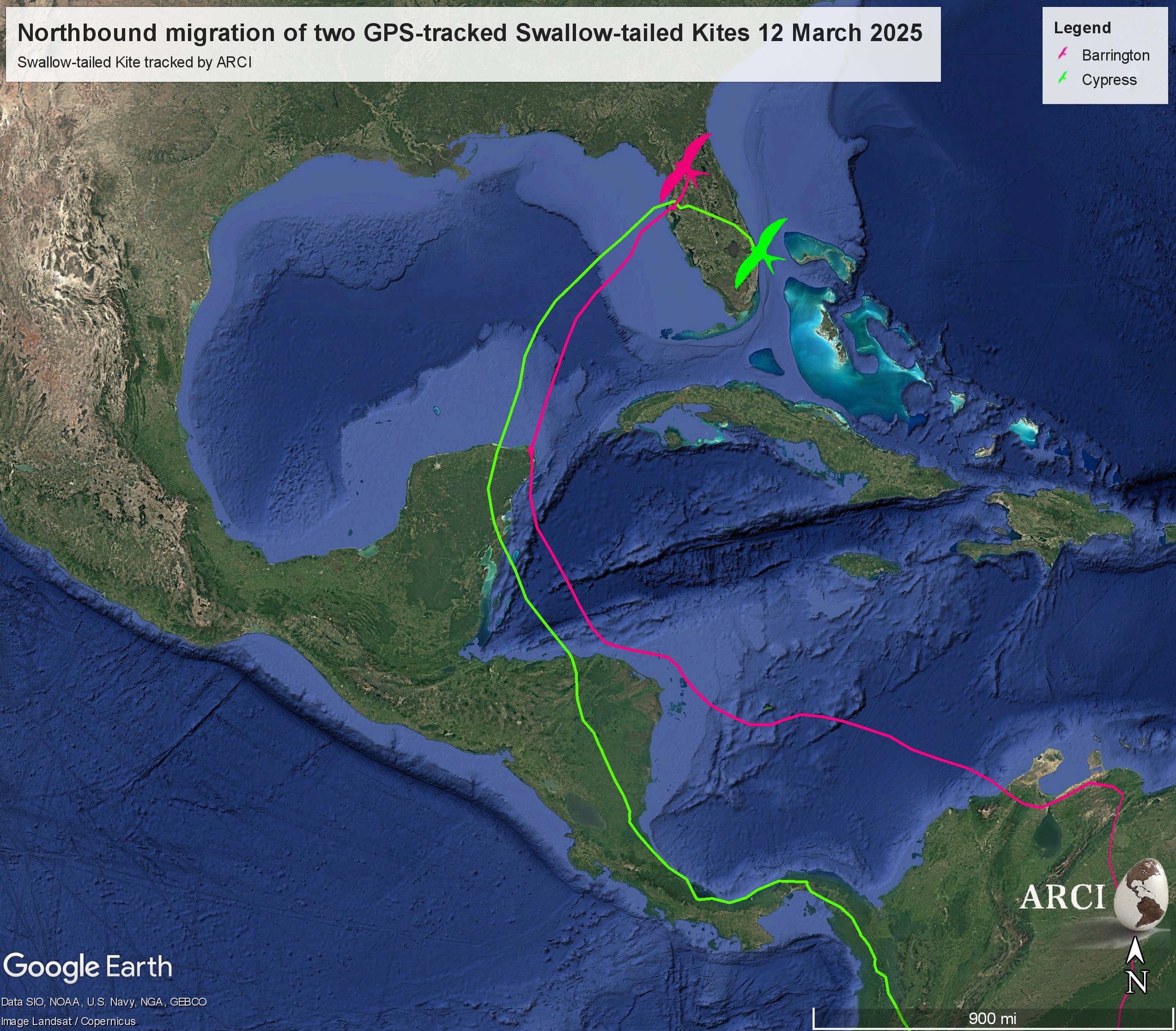Northbound migration is most treacherous during the lengthy over-water crossing of the Gulf of Mexico. Swallow-tailed Kites are eager to get to the breeding grounds and secure a nesting territory. Most will wait for the best tailwind from the Yucatán peninsula, however, increasing cold fronts can essentially present a wall that the wind-driven kites cannot combat. They can only last three days over water before they die.
Cypress and Barrington had parallel tracks about 500 miles apart as they crossed through Colombia. Cypress took the most common GPS-tracked Swallow-tailed Kite route over the Andes Mountains and through Panama, over land. Barrington stayed east and crossed the Caribbean Sea by Santa Marta, Colombia in a northwest direction towards the Yucatán Peninsula. Most birds come to shore in Nicaragua or Honduras, but he flew 1,300 miles across the sea in 58 hours.
Barrington spent a night on the Island of Cozumel before another day of rest at the northeast tip of Quintana Roo, Mexico. We can see that he was tempted to try a Gulf crossing but made the right decision to wait for a better tailwind. That occurred midday on 9 March when he got a huge tailwind across the Gulf of Mexico and on shore in Pinellas County, Florida 18 hours later!
Both birds were on the fast track to get to their former breeding grounds. Cypress is already in Palm Beach County, Florida and Barrington is northbound to McIntosh County, Georgia.
ARCI is tracking Swallow-tailed Kites not only to monitor the roosts, foraging areas, stopover sites, and winter destinations, but also to see how they use public and private lands and survive throughout the Southeastern States. We are grateful to our funders and project partners for making this research possible. Cypress and Barrington were sponsored by:
Palm Beach Zoo & Conservation Society
Palm Beach County’s Department of Environmental Resources Management (ERM)
American Bird Conservancy (ABC)
National Fish and Wildlife Foundation (NFWF)
CTT GSM-GPS transmitters


Saw my first STKI yesterday flying around over the building I live in. They used to live on this property. There’s a small number of trees where they nested remaining. I’m hoping that this one will come back. No doubt just wishful thinking but I’m a forever optimist!
I hope you’ve seen many this season Meret!
We live in Dunedin, FL and we have been seeing one or even two swallow tail kites soaring around our neighborhood since mid 2024.
Today I was taking an evening walk through our neighborhood and saw one swoop no more than 20 feet above my head with a small bird trailing behind. I then noticed the Kite had a small bird in its talons. I watched as the kite continued to soar around with the small bird trying his best to scare the kite and drop the bird.
Oh exciting! Yes, kites eat nestling birds…this is to feed their own young.